'˜Bailey's love letter to his 13-year-old self'
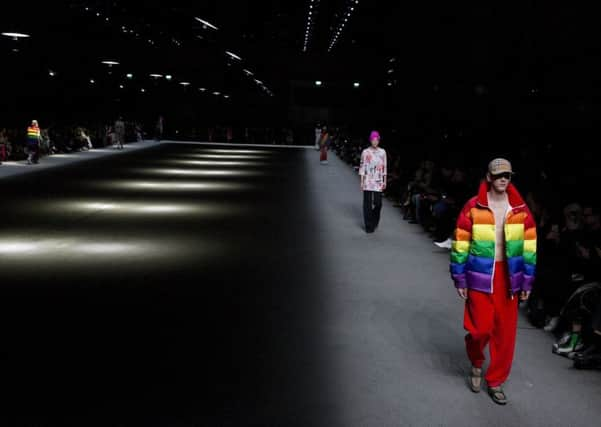

In the eerie darkness of Burberry’s cavernous S/S 2018 show space, the configuration of pendant lights hovering above the runway slowly starts to burn brighter. Then, as David Motion and Sally Potter’s hauntingly beautiful soundtrack to Orlando gives way to the falsetto strains of Jimmy Somerville (he of Bronski Beat and The Communards), the lights start to swing in a synchronised robotic ballet: backwards and forwards; left to right. The audience, here to bid farewell to Burberry’s outgoing president and chief creative officer of 17 years, Christopher Bailey, stares transfixed.
The lights, an art installation called Our Time by United Visual Artists (UVA) on special loan from MONA in Hobart, Australia, eventually break free of their strict military formation and start to move independently of one another, spinning and swirling their beams across the inky void. As far as metaphors go, it is a subtle gesture, but there is no doubting its significance, especially when set against Somerville’s 1984 gay anthem Smalltown Boy; the coming-out story of a working-class lad from the ’burbs.
Advertisement
Hide AdAdvertisement
Hide AdBailey, who was born in Halifax in 1971 to a carpenter and a window dresser, would have been an impressionable 13-year-old at the time of the radical song’s release. It doesn’t take a genius to work out that this show marks the point at which he has come full circle.
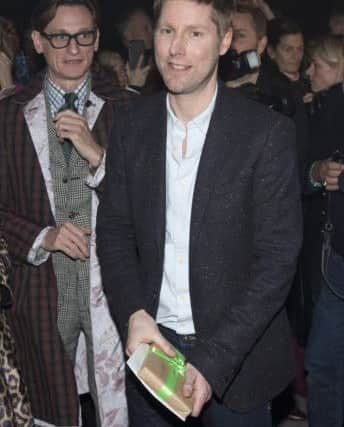

Then, BOOM! Adwoa Aboah appears in the first look of Bailey’s last chapter: a graffiti-patterned pink shearling fleece hoodie and a ballgown skirt decorated with a huge rainbow stripe. Out come more of these millennial festival warriors, each dressed in deliberately clashing mashups: tie-dyed singlets with overlong flares; cuddly hoodies of brightly patterned blanketing worn with frothy tulle; diamanté-encrusted sheath dresses over camouflage knits; and lots of Burberry’s brand new Rainbow Check.
“My final collection here at Burberry is dedicated to — and in support of — some of the best and brightest organisations supporting LGBTQ+ youth around the world,” the designer said in a statement released prior to the show. “There has never been a more important time to say that in our diversity lies our strength, and our creativity.”
And yet while ‘diversity’ has become fashion’s latest buzzword, creativity has always been at the heart of Bailey’s conversation.
Advertisement
Hide AdAdvertisement
Hide Ad“I don’t think I’ve ever felt like I wasn’t being creative. My objective has always been to love the creative process,” Bailey told me when we first met, in 2001, upon his appointment as Burberry’s creative director. “Numbers are important, but numbers don’t get customers into the stores.” (He would have to get to grips with all those ‘numbers’ later, when, in May 2014, he was made Burberry’s chief executive officer; the first openly gay CEO at a FTSE 100-listed corporation.)
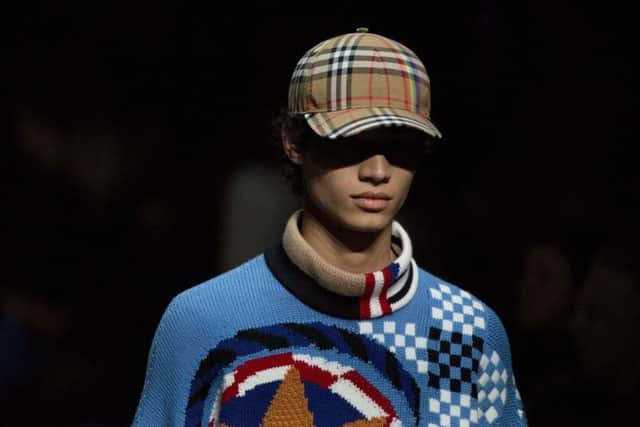

Armed with that unbridled creativity, Bailey transformed Burberry from a dusty heritage label into an international luxury megabrand, subverting the label’s stylistic codes with a romp through all things British. Along the journey he celebrated Britain’s potters (Josiah Wedgwood and Clarice Cliff for S/S 2005); its sculptors (S/S 2017’s homage to Henry Moore); its Virgin Queen (A/W 2016’s Tudor-fest via Virginia Woolf’s novel Orlando); and its femmes fatales. I mean, who could forget Cara Delevingne as she walked A/W 2013’s ode to Christine Keeler, the infamous playgirl who helped bring down the British government in 1963–4, in second-skin latex?
“The company has been around for a long time, but I think you’ve always got to push things,” Bailey said when he was fresh from cutting his fashion teeth at Donna Karan in New York and at Gucci with Tom Ford. “It’s no good being lazy and taking it all for granted — that’s when you’re in trouble.”
Adding a massive dose of rock’n’roll cool to Burberry’s repertoire, Bailey often called upon the legends of British music to help put a fresh spin on the house codes. David Bowie in his Ziggy Stardust phase; the marching band get-ups of The Beatles’ Sgt Pepper. Mods/punks/rockers/skinheads all skulked down Burberry’s runway, while James Bay, Jake Bugg, Paloma Faith and Alison Moyet are just some of the names who played live at his shows.
Advertisement
Hide AdAdvertisement
Hide Ad“At first, I found the fact that Burberry was so popular with all of these very different people a bit overwhelming,” Bailey confided when discussing his use of music as a way to unify the enormously broad consumer base as well as a portal through which to understand it. “There was no other business model we could look to, because there are not that many companies that cater for so many people. We really are able to dress everyone from the Queen to working-class lads and everybody in between — that is unique.”
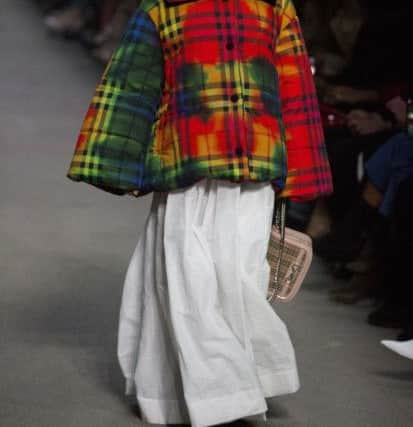

The one constant in Bailey’s sociocultural cross-referencing has been the Burberry trench coat. Reimagined season after season, it has appeared as a canvas for handpainted florals for A/W 2014’s charming paean to the Bloomsbury Set; as urban armour encrusted with fierce studs for S/S 2011’s hardcore glamazons; and as the ultimate go-to in nude-coloured lace for civil-ceremony brides the world over.
“I don’t think about things in terms of bad taste or good taste; I think in terms of something being very sophisticated or very ugly. I like mixing the two together,” said Bailey, who, for his swansong, softened the trench’s rigorous silhouette and gave it a geeky, vintage vibe; even slicing it from bubblegum-pink shearling and decorating it with appliqué ‘doodles’ of shoelaces, plastic string and wool yarn.
Indeed, Bailey has always (gently) marched where others have dithered. Under his tenure, Burberry was the first British luxury brand to live-stream its fashion shows; to fully embrace the power of social media to maximise global reach; and to tackle the see-now-buy-now business model. And, like Thomas Burberry before him, Bailey has remained interested in the technical aspect of garments and fabric innovation. (This season, there is 3-D printed latex lace for tiered skirts, and beaded embroideries encased in plastic for an irreverent take on preciousness.) “I used to go to jumble sales and buy bagfuls of clothes, long before I thought about a career in fashion. It’s funny, because I used to buy tons of trench coats. I was always interested in their construction,” Bailey said.
Advertisement
Hide AdAdvertisement
Hide AdBurberry’s latest leather bags can be traced back to Bailey’s teenage obsessions. The Belt Bag, which launches this month and has already been spotted on Naomi Watts and Rosie Huntington-Whiteley, is a Modernist spin on stealth-wealth chic with its tri-tone colour combinations and graphic belt detail (each comes with two belts so you can change up your look) taken from the Burberry trench coat. Come May, the Bucket bag (with bold grommets) and D-ring bag (named after the hardware that WWI soldiers added to their trench coats so they could attach military equipment) will touch down, meaning you can carry a little bit of Bailey around with you at all times. Not that he was ever going to be easily forgotten.
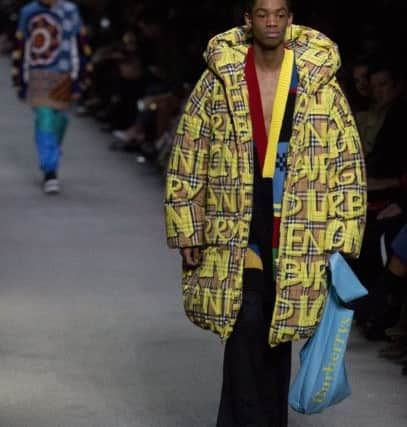

Back at the show, Burberry’s rainbows reach their apogee in Cara Delevingne’s finale cape of striped faux fur, the Freddie Mercury-like campness of it all blowing a raspberry in the face of establishment rules; rules which, until recently, Burberry still embodied. “I’m here to keep people asking, ‘What is Burberry?’” Bailey said to me at the very beginning of his time at the 162-year-old brand. Now, at the very end is Burberry’s championing of LGBTQ+ rights ... and, I suspect, a love letter from Bailey to his 13-year-old self.
As Delevingne disappears backstage, a triangular tunnel of multi-coloured light creates a KLF-style ravescape (it’s actually a new art piece Bailey made with UVA called Spectrum) through which the models stride with purpose (and just a hint of bittersweet melancholy) like a millennial-generation army. “Every company has a soul,” Bailey said once.“You just have to listen to that soul.”
*Jamie Huckbody is European Editor of Harper’s BAZAAR Australia.
*There’s more fashion at: https://www.yorkshirepost.co.uk/lifestyle/fashion and https://www.yorkshireeveningpost.co.uk/lifestyle/fashion